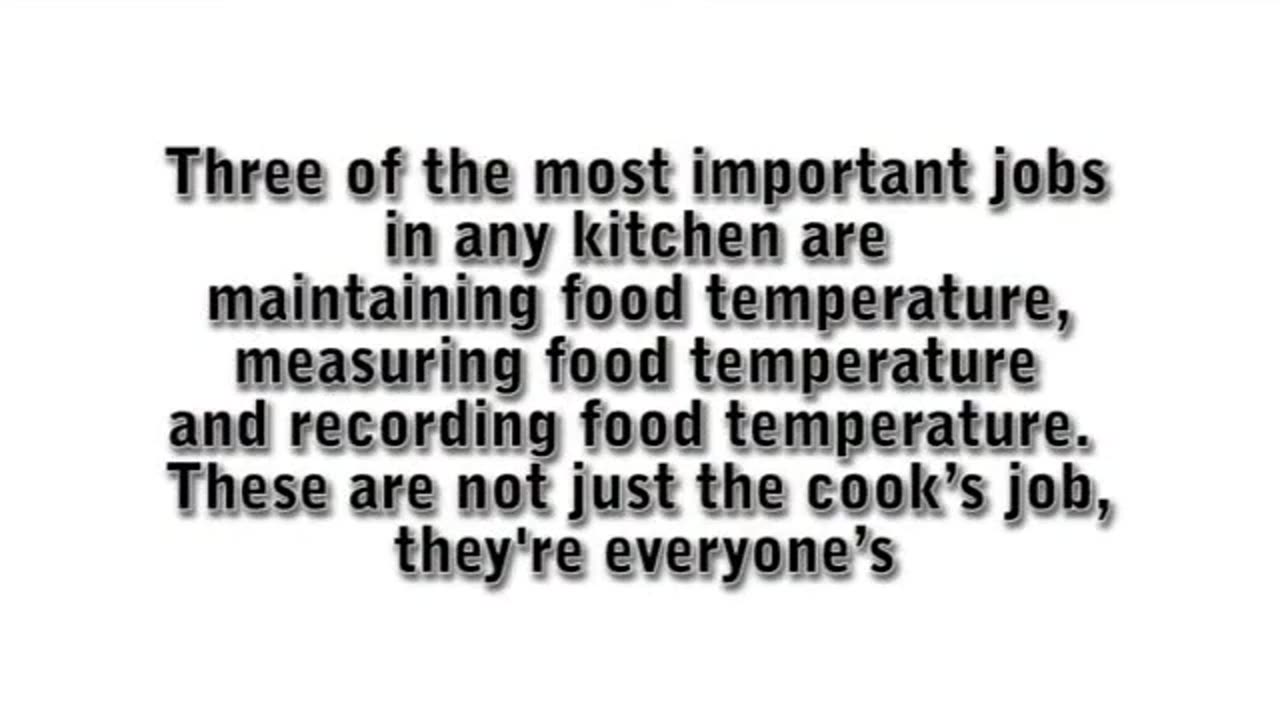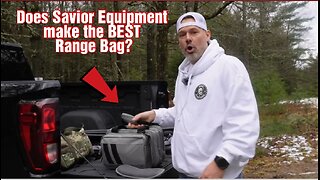Premium Only Content

Food Handler Training Course_ Part 4
### **Food Handler Training Course (Part 4) – Safe Food Storage**
Proper food storage is essential to maintaining food safety, preserving food quality, and preventing contamination. As a food handler, understanding safe storage practices helps protect customers from foodborne illnesses and ensures compliance with food safety regulations.
---
### **Objectives of Part 4**
1. Learn the principles of proper food storage.
2. Understand how to prevent contamination in storage areas.
3. Recognize best practices for organizing and maintaining storage spaces.
---
### **Importance of Safe Food Storage**
1. **Prevents Foodborne Illness:**
- Proper storage reduces the risk of bacterial growth and contamination.
2. **Preserves Food Quality:**
- Protects food from spoilage and maintains freshness.
3. **Complies with Regulations:**
- Adheres to food safety laws and guidelines, preventing penalties or closures.
---
### **Key Food Storage Principles**
#### **1. Temperature Control**
- Store food at the correct temperatures to prevent spoilage and bacterial growth:
- **Refrigerated Foods:** 0°C to 5°C (32°F to 41°F).
- **Frozen Foods:** -18°C (0°F) or lower.
- **Dry Foods:** 10°C to 21°C (50°F to 70°F) in a cool, dry area.
#### **2. FIFO System (First In, First Out)**
- Rotate stock to use older products first and reduce waste.
#### **3. Labeling and Dating**
- Clearly label all food items with their contents and the date of preparation or receipt.
- Include expiration dates to ensure foods are used within their safe timeframes.
#### **4. Proper Organization**
- Store food in a clean, organized manner to prevent cross-contamination.
- Use separate storage areas for raw and ready-to-eat foods.
---
### **Storage Best Practices**
#### **1. Refrigeration**
- Keep perishable items in the refrigerator at or below 5°C (41°F).
- Store raw meats, poultry, and seafood on the bottom shelves to prevent drips onto other foods.
- Avoid overloading the fridge to allow proper air circulation.
#### **2. Freezing**
- Freeze food immediately if it will not be used within a few days.
- Wrap items tightly to prevent freezer burn.
- Defrost frozen foods in the refrigerator, cold water, or microwave—not at room temperature.
#### **3. Dry Storage**
- Keep dry foods in sealed, labeled containers.
- Store items off the floor and away from walls to prevent pest infestations.
- Check for signs of spoilage or damage, such as bulging cans or torn packaging.
---
### **Preventing Contamination in Storage Areas**
#### **1. Physical Contamination**
- Use clean, food-safe containers for all stored items.
- Keep storage areas free of dirt, debris, and broken equipment.
#### **2. Chemical Contamination**
- Store cleaning products and chemicals away from food storage areas.
- Use food-grade containers and wraps to avoid contamination.
#### **3. Biological Contamination**
- Regularly clean and sanitize storage areas, including shelves and bins.
- Ensure proper temperature control to prevent bacterial growth.
---
### **Common Food Storage Mistakes to Avoid**
1. **Storing Raw and Cooked Foods Together:**
- Always separate raw foods from ready-to-eat items.
2. **Overpacking Refrigerators or Freezers:**
- Overloading can block airflow, leading to uneven cooling.
3. **Failing to Check Expiry Dates:**
- Regularly inspect stored foods and discard expired items.
4. **Leaving Foods Uncovered:**
- Cover all stored foods to protect them from contamination and drying out.
---
### **Examples of Safe Storage Practices**
**Scenario 1:** A chef receives a delivery of raw chicken, vegetables, and canned goods.
- **Safe Practice:** Store raw chicken on the bottom shelf of the refrigerator, vegetables on higher shelves, and canned goods in a cool, dry pantry.
**Scenario 2:** Leftover soup needs to be refrigerated.
- **Safe Practice:** Cool the soup quickly using shallow containers before placing it in the refrigerator.
---
### **Storage Checklist for Food Handlers**
- ✅ Maintain the correct storage temperatures for all food types.
- ✅ Label and date all stored foods.
- ✅ Use the FIFO system for inventory management.
- ✅ Keep storage areas clean and free from pests.
- ✅ Regularly inspect food for spoilage or contamination.
---
### **Tips for Success**
- Conduct regular training sessions on safe storage practices for all employees.
- Use thermometers to monitor refrigerator and freezer temperatures.
- Schedule routine cleaning and pest control for storage areas.
---
### **Conclusion**
Safe food storage is a cornerstone of food safety. By following best practices for temperature control, organization, and contamination prevention, food handlers can ensure the safety and quality of the food they serve.
---
Would you like to proceed to **Part 5: Cleaning and Sanitizing** or revisit another topic?
-
 6:43
6:43
HSESafetyInformation
2 months agoLahori Chanay Recipe - Lahori Cholay Recipe - Chana Chana Masala
39 -
 37:09
37:09
Nick Freitas
1 day agoExposing The Worst of the Swamp
52.4K33 -
 30:12
30:12
CatfishedOnline
1 day agoOnly Fans Model Drains Man's Money in Romance Scam!
34K11 -
 15:01
15:01
Shea Whitney
22 hours ago $3.41 earned20 *Stylish* AMAZON Closet Organization Ideas for 2025!
36K7 -
 16:37
16:37
IsaacButterfield
1 day ago $2.88 earnedFatTok Is Ruining Lives
24.3K26 -
 8:42
8:42
VSOGunChannel
17 hours ago $2.76 earnedDOJ Attacks the Gun Industry & ATF Gets a New Deputy Director
26.2K15 -
 59:47
59:47
Trumpet Daily
22 hours ago $3.93 earnedKilmar Abrego Garcia: Democrat Poster Child and MS-13 Terrorist - Trumpet Daily | Apr. 17, 2025
24.3K4 -
 8:59
8:59
MudandMunitions
19 hours agoThe Savior Equipment Range Bag: Worth the Hype or Overrated?
29.8K1 -
 3:06:16
3:06:16
Price of Reason
19 hours agoDESPERATE Gavin Newsom SUES Trump! Disney Fantastic Four to FLOP? Asmongold Faces BACKLASH Again!!
157K19 -
 3:48:12
3:48:12
Akademiks
11 hours agoDay 2/30. Drake Challenges UMG and calls them Desperate. Ye Backs Drake. Lil Wayne Dont Fw Superbowl
135K17